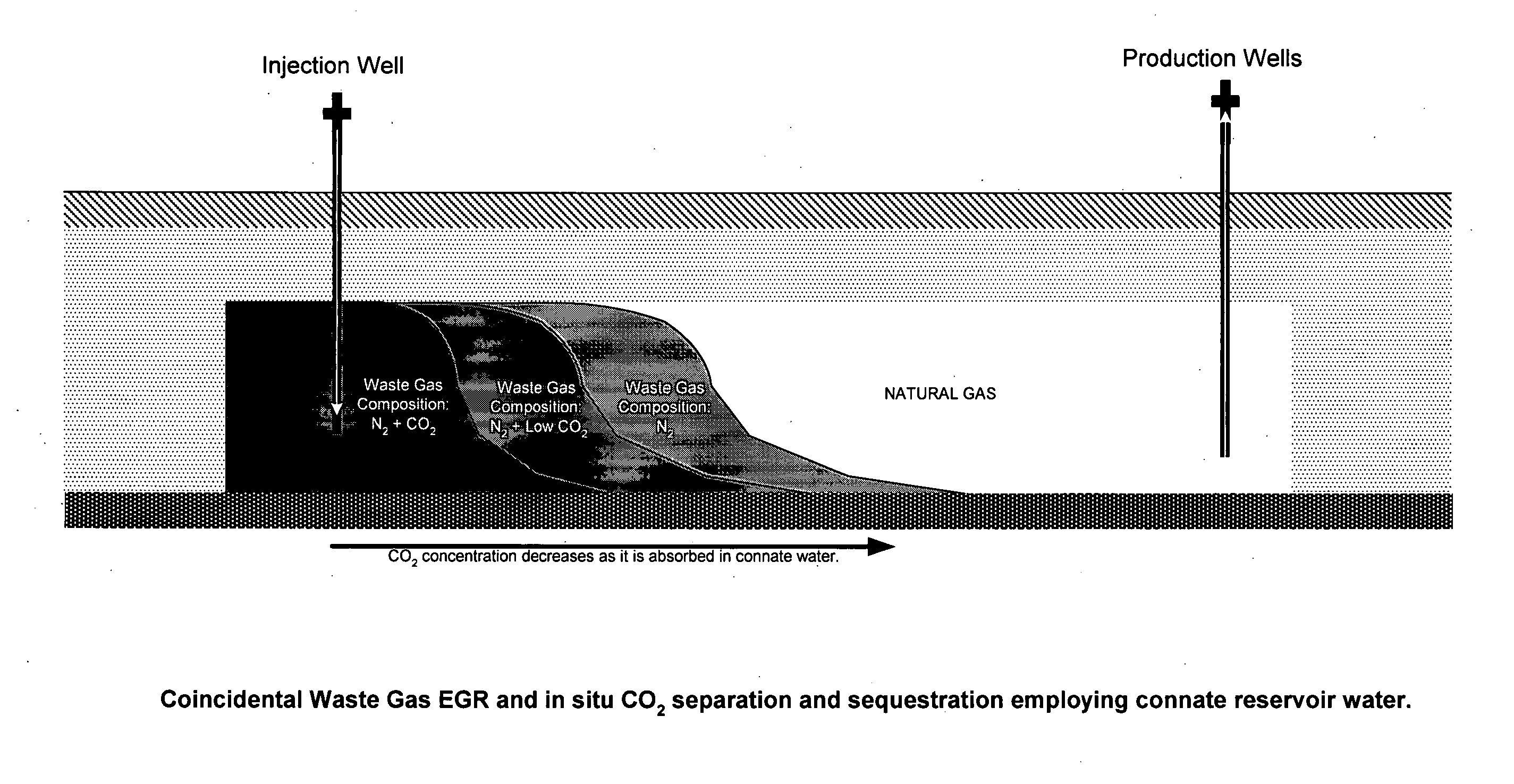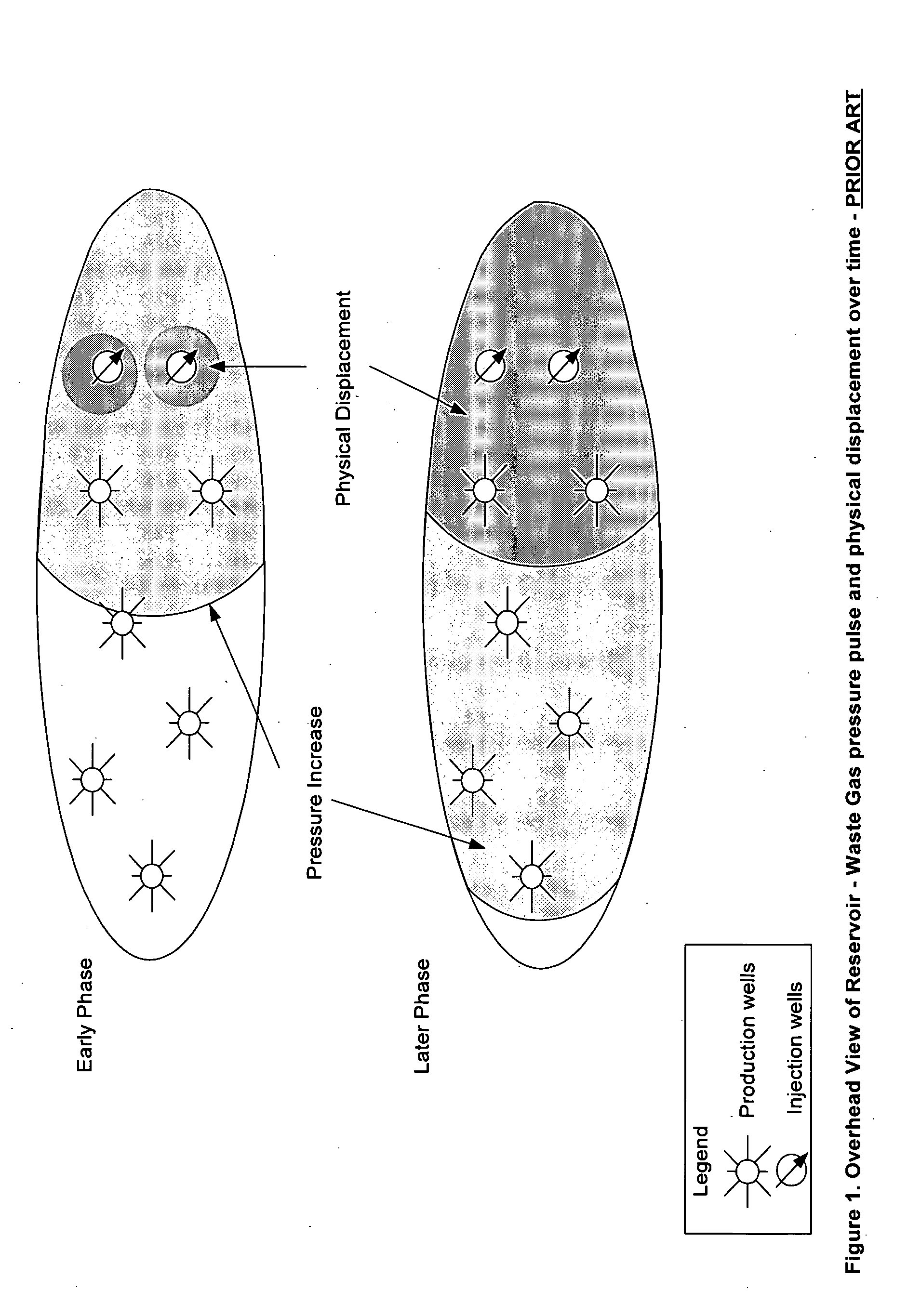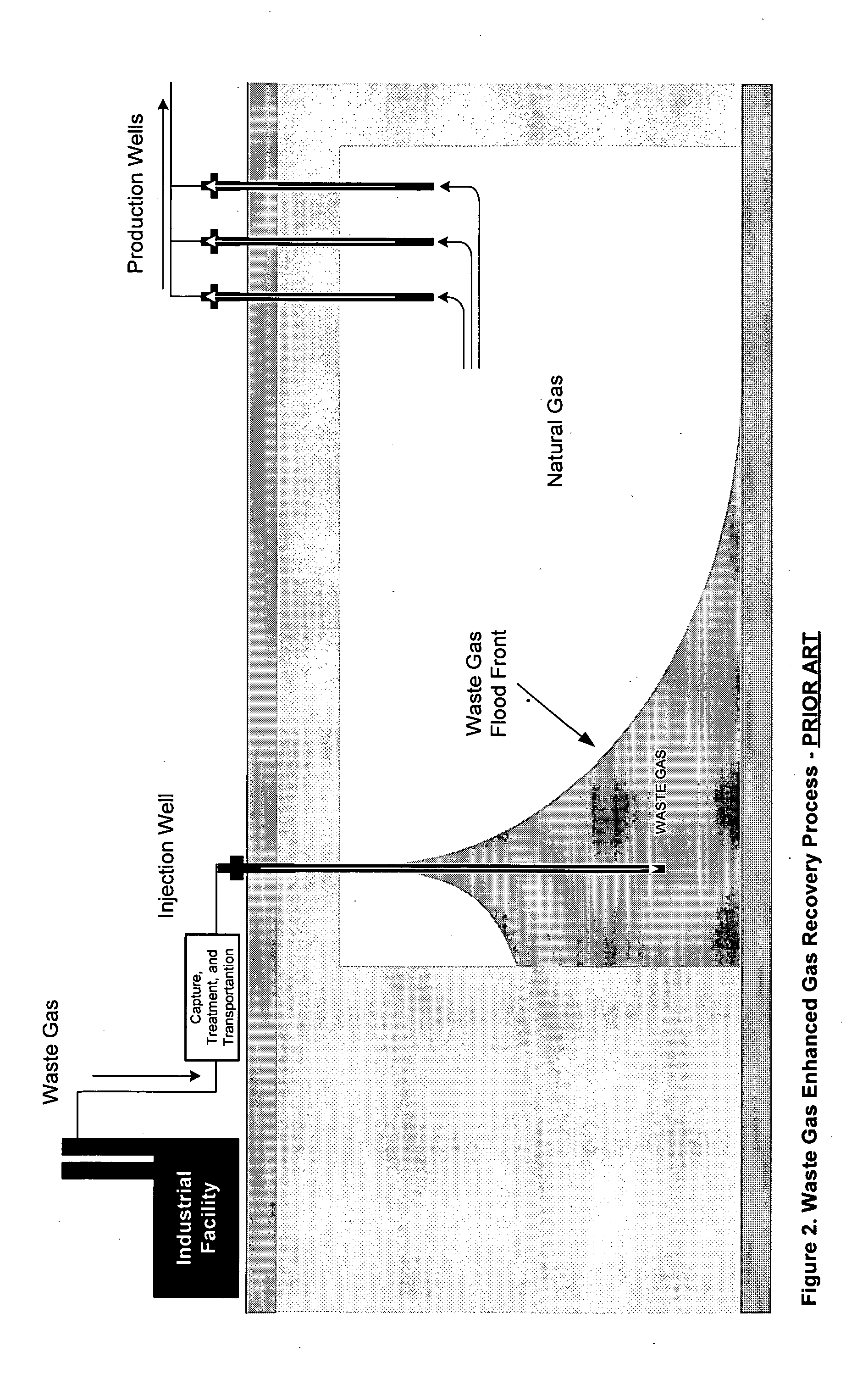Applications of waste gas injection into natural gas reservoirs
a technology of natural gas and injection gas, which is applied in the direction of drinking water installation, fluid removal, carbon dioxide or nitrogen storage, etc., can solve the problems of inability to commercialize gas displacement egr using those gases, the general waste gas egr concept is not currently in use, and the potential for explosion or combustion is eliminated or reduced, and the viscosity and solubility are high. , the effect of reducing the risk of explosion or combustion
- Summary
- Abstract
- Description
- Claims
- Application Information
AI Technical Summary
Benefits of technology
Problems solved by technology
Method used
Image
Examples
Embodiment Construction
[0047] In Situ Management of Problematic Substances Contained in Waste Gas
[0048] Over the course of the past decade the environmental concerns associated with greenhouse gas (“GHG”) emissions have received increasing attention, with the 1997 Kyoto Protocol serving to focus the world's attention on the initiative to control and reduce such emissions. Carbon dioxide, which will almost always be a primary component of any Waste Gas stream, is considered the most significant anthropogenic contributor to climate change. A host of GHG emissions reduction alternatives have been proposed, including a variety of proposals focused on capturing carbon dioxide out of Waste Gas and using it for EOR, EGR or enhanced coalbed methane recovery, or simply disposing of it in depleted hydrocarbon reservoirs. However, the cost of capturing a concentrated or near-purity stream of carbon dioxide out of Waste Gas has inhibited the pursuit of such proposals.
[0049] Presently there are numerous types of com...
PUM
 Login to View More
Login to View More Abstract
Description
Claims
Application Information
 Login to View More
Login to View More - R&D
- Intellectual Property
- Life Sciences
- Materials
- Tech Scout
- Unparalleled Data Quality
- Higher Quality Content
- 60% Fewer Hallucinations
Browse by: Latest US Patents, China's latest patents, Technical Efficacy Thesaurus, Application Domain, Technology Topic, Popular Technical Reports.
© 2025 PatSnap. All rights reserved.Legal|Privacy policy|Modern Slavery Act Transparency Statement|Sitemap|About US| Contact US: help@patsnap.com



